Let’s Talk EMDR!
Are EMDR Intensives Hyped Or Effective? Find Out From The Master Himself
EMDR enthusiasts, brace yourselves! Ever pondered the buzz around EMDR intensives? Curious to know if the hype is backed by real effectiveness? Well, hold onto your curiosity hats because we’ve got a treat for you. Step into the enlightening realm of ‘Let’s Talk EMDR,’ the captivating podcast powered by the EMDR International Association (EMDRIA) hosted by Kim Howard.
In a recent episode, the spotlight was on none other than Robert A. Grigore, a certified EMDR therapist and consultant. The topic of discussion? EMDR therapy intensives—the subject that can be a game-changer. As someone who had the chance to learn from this podcast, I’m excited to share my insights with you. Get ready to uncover the truth straight from the master himself as we navigate through a conversation that unveils the secrets and insights behind the curtain.
How Did Robert Become An EMDR Therapist?
Robert’s journey is certainly not what you may be expecting (He was not born with the love for EMDR like every other therapist says). His journey started off as a talk therapist, but after spending as long as almost 3 years on a client and still not getting the results was when he thought to himself that something was off. Then somehow, he learned about EMDR and started taking professional training for it.
And no, this was not a love-at-first-sight kind of situation. Just like many of you, Grigore also thought to himself that EMDR was a ridiculous invention and that just tapping was not going to help anyone. It was actually when someone like you and me, one from his clients, saw a huge shift in their mindset. In just 3 EMDR sessions, his client went from the mindset of killing his abuser to having a civil conversation with him. That’s huge, and that’s exactly what Robert felt. Now, let’s get to the main discussion where Robert and Kim discussed the EMDR intensives.
What Are EMDR Intensives?
Our therapist talks about “two levers” to be pulled regarding EMDR intensives. First, is the “duration lever,” meaning how long the session is. With an EMDR intensive, the duration may be quite a bit longer than the average session, which is typically 50-60 minutes. Robert’s EMDR intensive sessions range from anything between 2 to 6 hours. The second “lever” to be pulled is the “frequency lever,” meaning how many times per week are you seen by your therapist? Pulling one lever or the other dramatically increases speed, but pulling both levers supercharges the results according to Robert. But is going this far, this intensive, really worth it? Hear it from Robert!
Are EMDR Intensives Really Effective?
According to Robert, 37 out of his 39 EMDR-intensive clients saw a tremendous change in their lives. He also shared the experience of his client Mike who served as a successful financial consultant for decades until COVID happened, and he lost a bunch of businesses all at once.
After almost 17 hours of frequent 1.5-hour sessions, Mike went from having suicidal thoughts to living life to the fullest again and running a non-profit organization. Of course, the details are missing here, and the process must have so much more to it, but what we do know from this is that EMDR intensives are effective.
Are There Any Myths Related To EMDR Intensives?
Robert busted two myths about EMDR intensives for his audience:
- It’s Dangerous.
- Anyone Can Do It.
To support what he was saying, Robert quoted a study conducted by Mendez et al., 2018, who used a modified approach of a previous study and conducted 5-day intensive EMDR therapy on 12 patients.
All patients received 90-minute-long sessions twice daily, and at the end of the study, significantly reduced their symptoms. The intensives are not harmful, but anyone performing the intensives might be harmful because not every therapist or clinician is trained enough to take a client through 2-6 hours sessions a day, 3-5 days in a row. So, the right kind of knowledge, training, and clinical experience is very important to get the right results.
What Upcoming Plans Does Robert Have Related To EMDR?
Robert believes that we have a long way to go before we overcome cultural differences and people become more aware of the benefits of EMDR therapy. For this purpose, he has been working with his colleagues to put together some cultural training to shift perspectives. He also shared his favorite free resources for you all to utilize and get help from. Sign up for his free eBook “You Need Therapy. EMDR: Real People With Real Problems Getting Real Help” here. Or grab the physical copy on Amazon.ca or Amazon.com.
Here’s The Catch
All in all, our host and guest reached the conclusion that not every therapy is for everyone. But Robert says that the quick turnaround time of intensive EMDR therapy is a favourite aspect that he and over 40 clients (at the time of the podcast) have similar feelings about. With this accelerated approach to therapy, clients no longer have to wait for years or even months for results. And Robert’s anecdotal evidence seems to mirror the research, indicating the low drop out rates for clients when undergoing intensive EMDR therapy (meaning, most who start the treatment end up completing it because it’s so short).
All in all, EMDR is an excellent approach for anyone looking to overcome past traumas, insecurities, and fears. But EMDR intensives seem to take it to the next level. You can listen to the complete podcast here. Take control of who you want to be and how you want to live your life.









